Structuring narratives
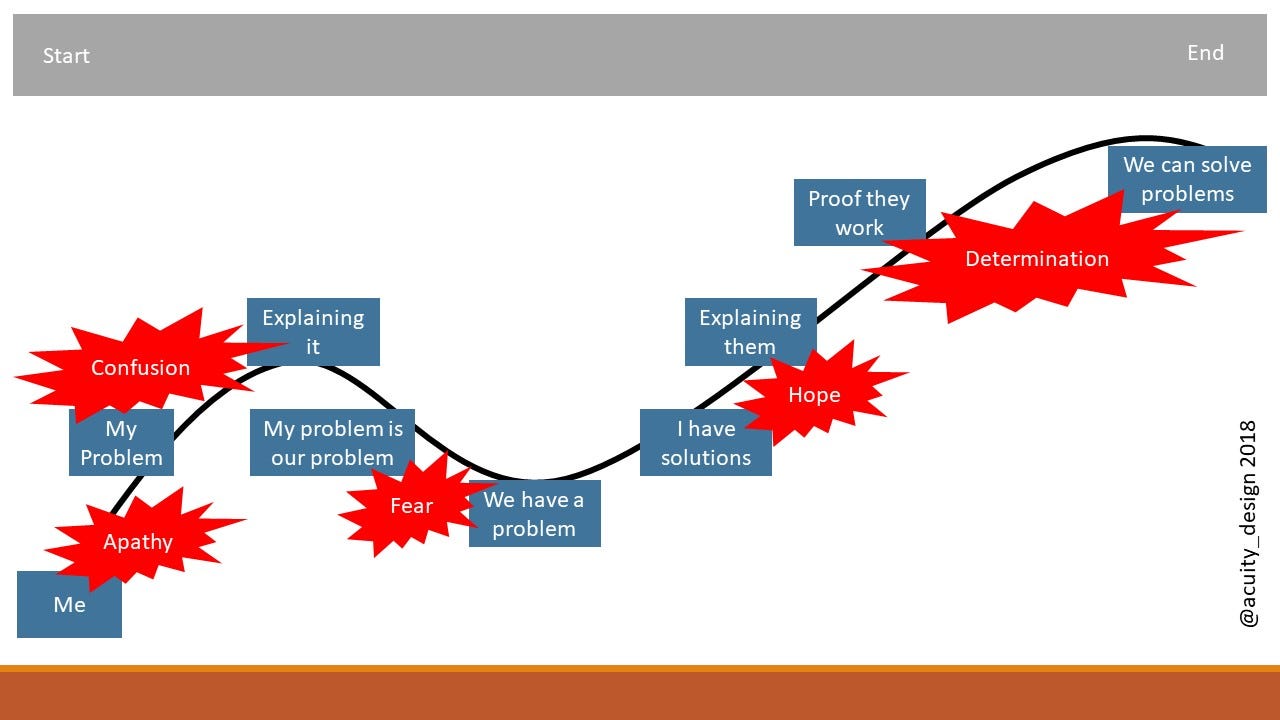
A lot of conferences say they’re open to new speakers but having the confidence to speak depends on many factors. Trying to transfer your knowledge and experience into a structured talk is one barrier.
This post is just about one way I write 15–30 minute talks for professional audiences, mostly in user experience (UX) and design.
I plan for two factors:
- Content
- Emotion
This framework starts with content design but uses emotion as check that people will listen, will understand, will remember and will care.
You can download all of this for free as a PDF workbook.
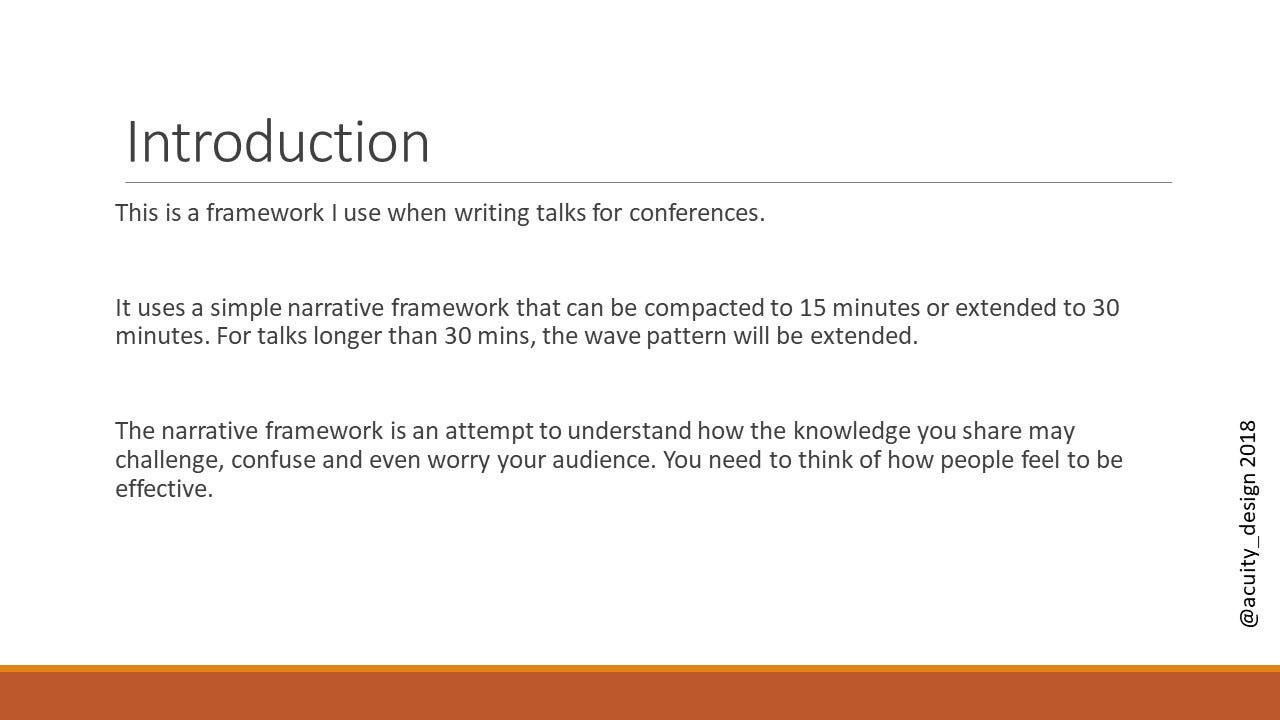
Have a Narrative Structure
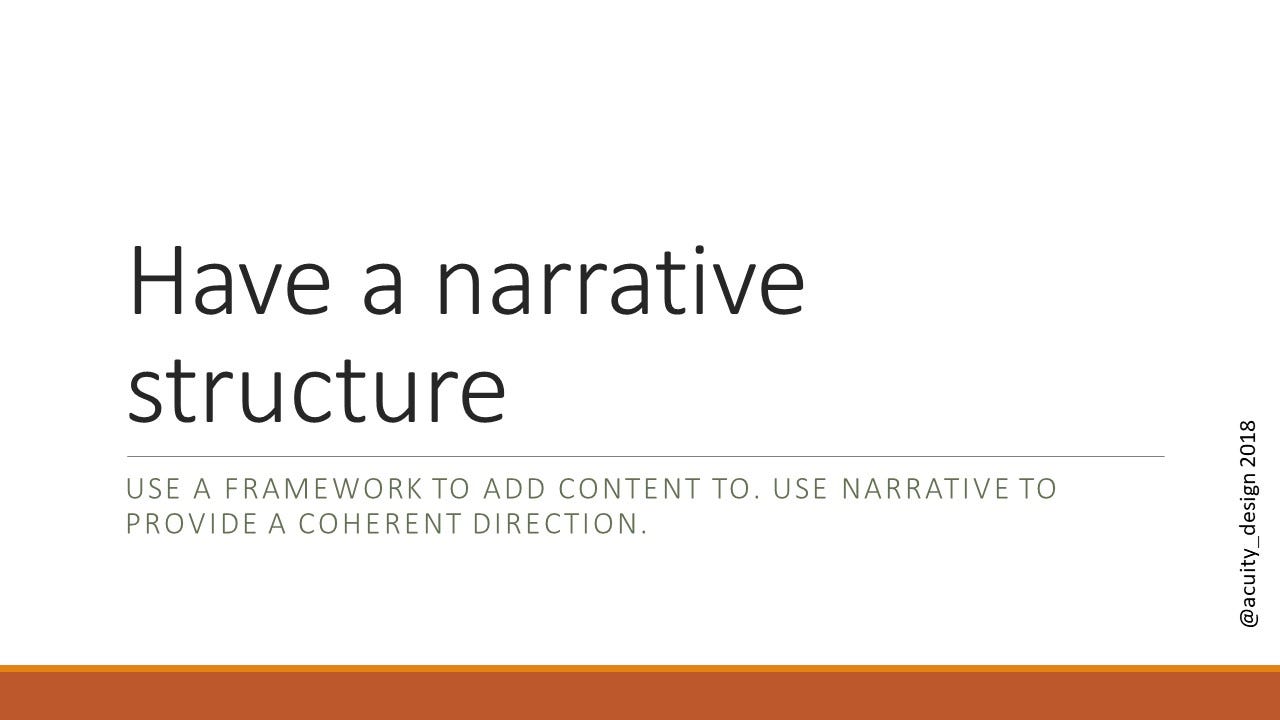
Narrative structure is important. Audiences need a sense of direction in talk: a beginning, a middle and an end
This is not the same as storytelling. Storytelling is deeper. It involves emotional sharing and listening that can be very hard. For a beginner and for a professional audience, storytelling may be too great a leap.
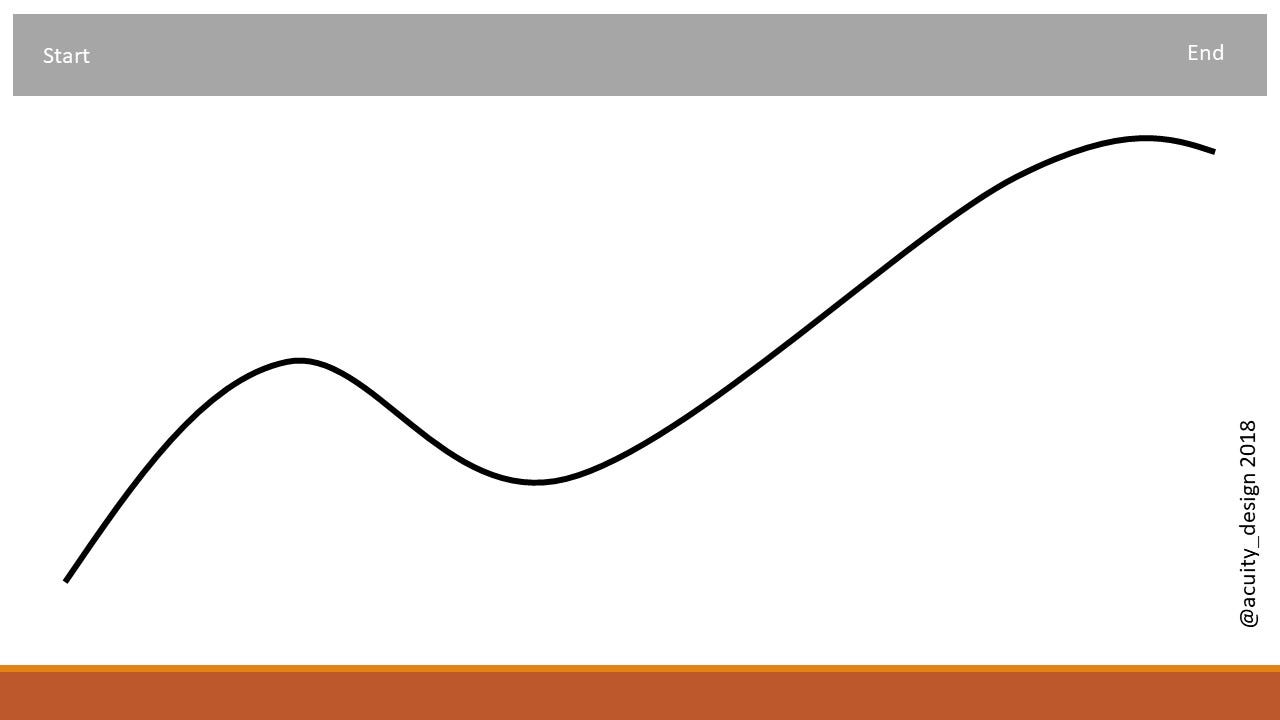
Narrative structure is not deep. It is understanding how what you say works.
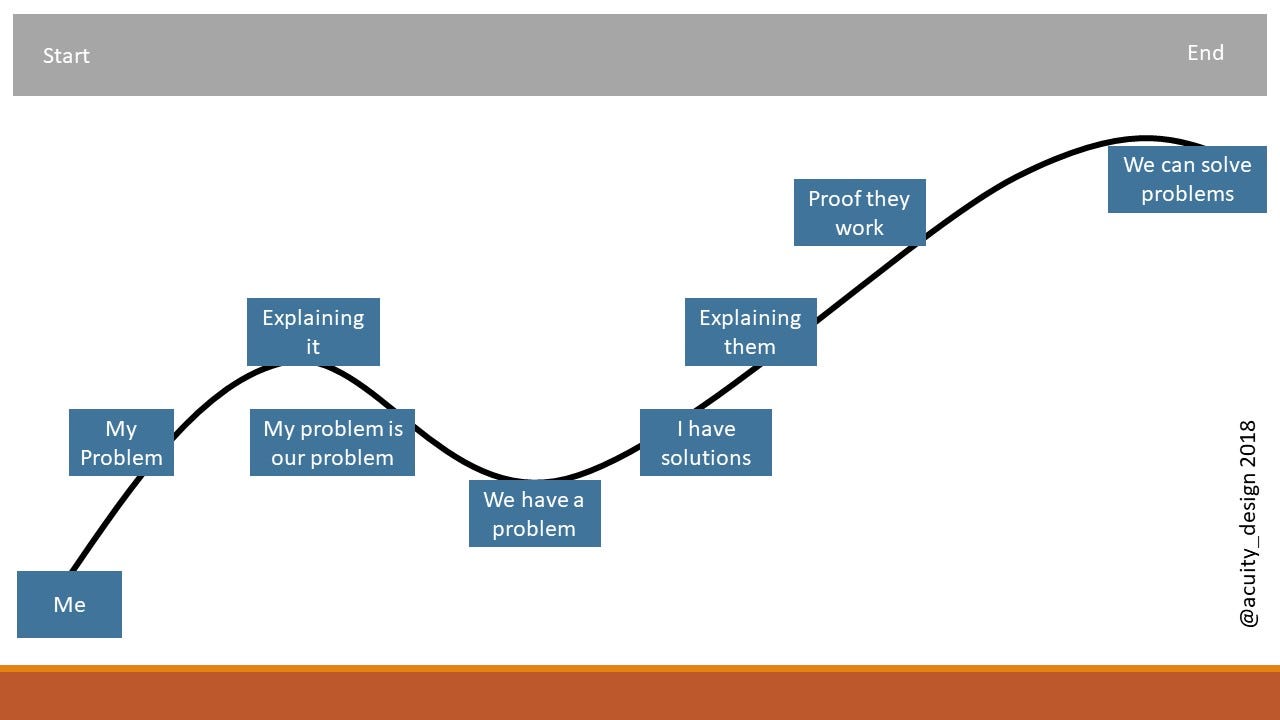
This is the narrative framework I use. It is about starting with yourself and the knowledge you have about problems you encounter. However, it is also about transferring knowledge to the audience so they care, they know and they want to do something afterwards.
My Problem to Our Solution
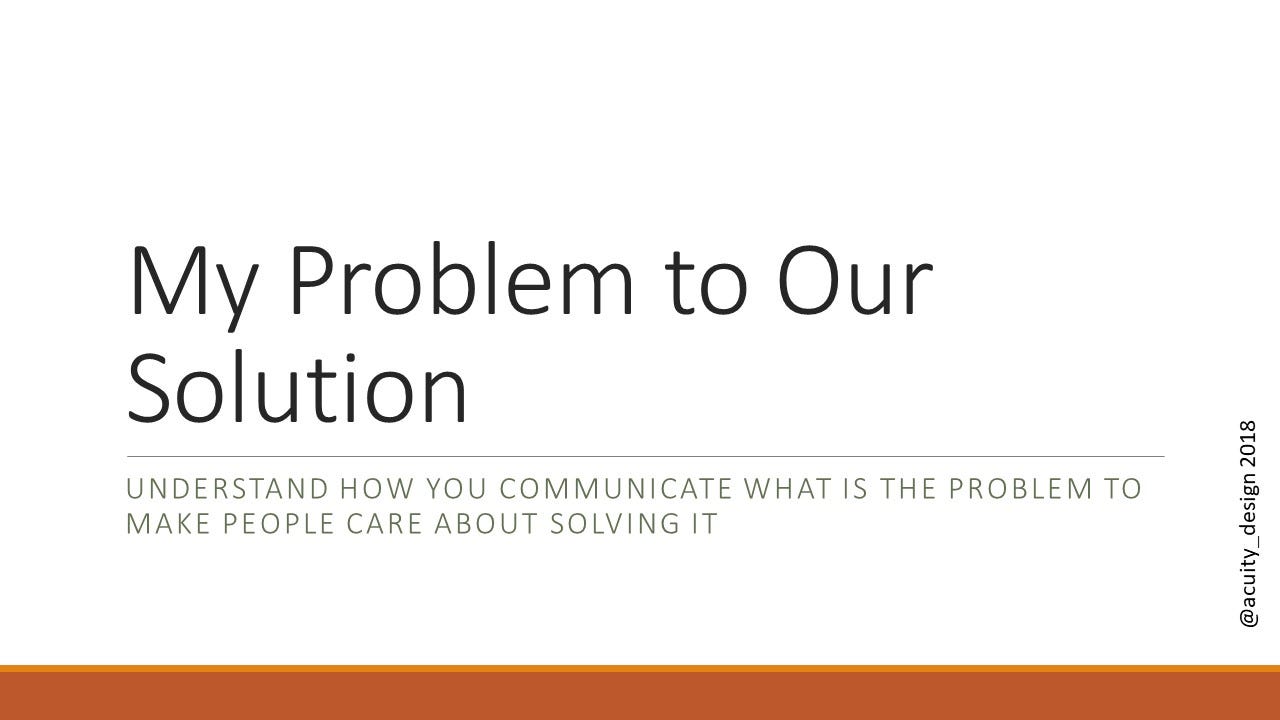
This is the point of the talk. Taking what is inside yourself and making it into something shared amongst us.
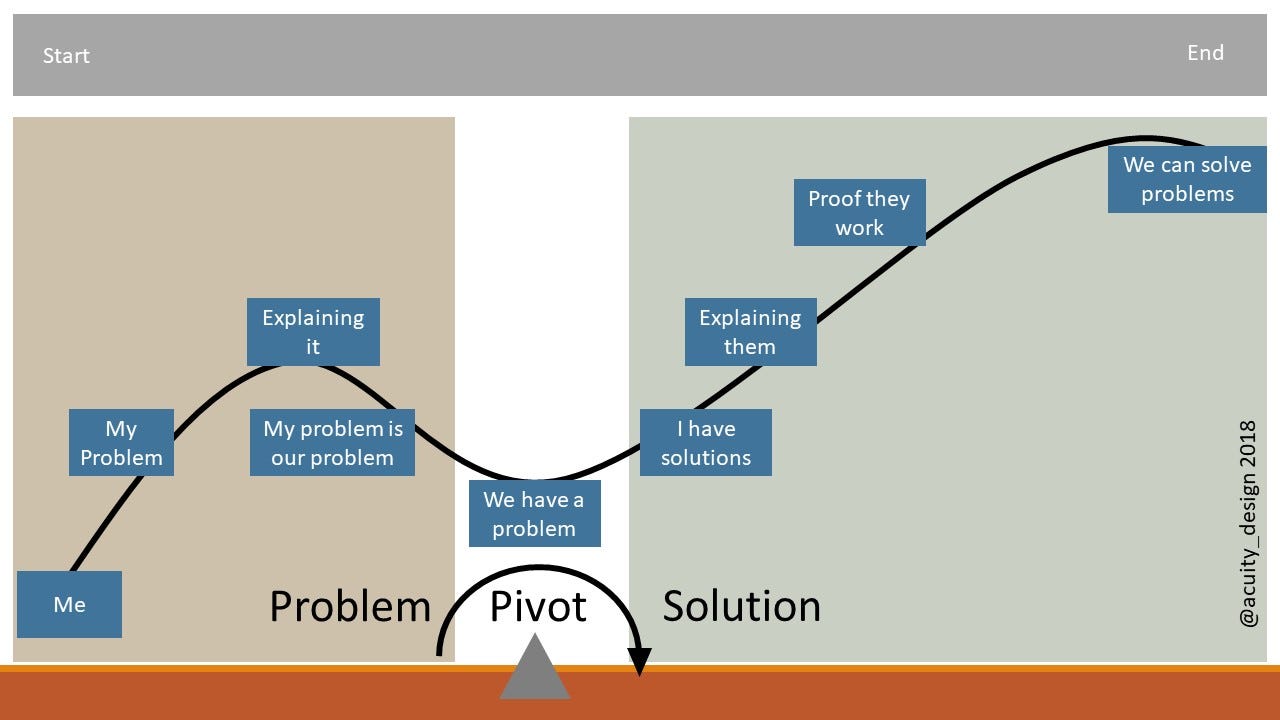
The talk pivots from problem to solution.
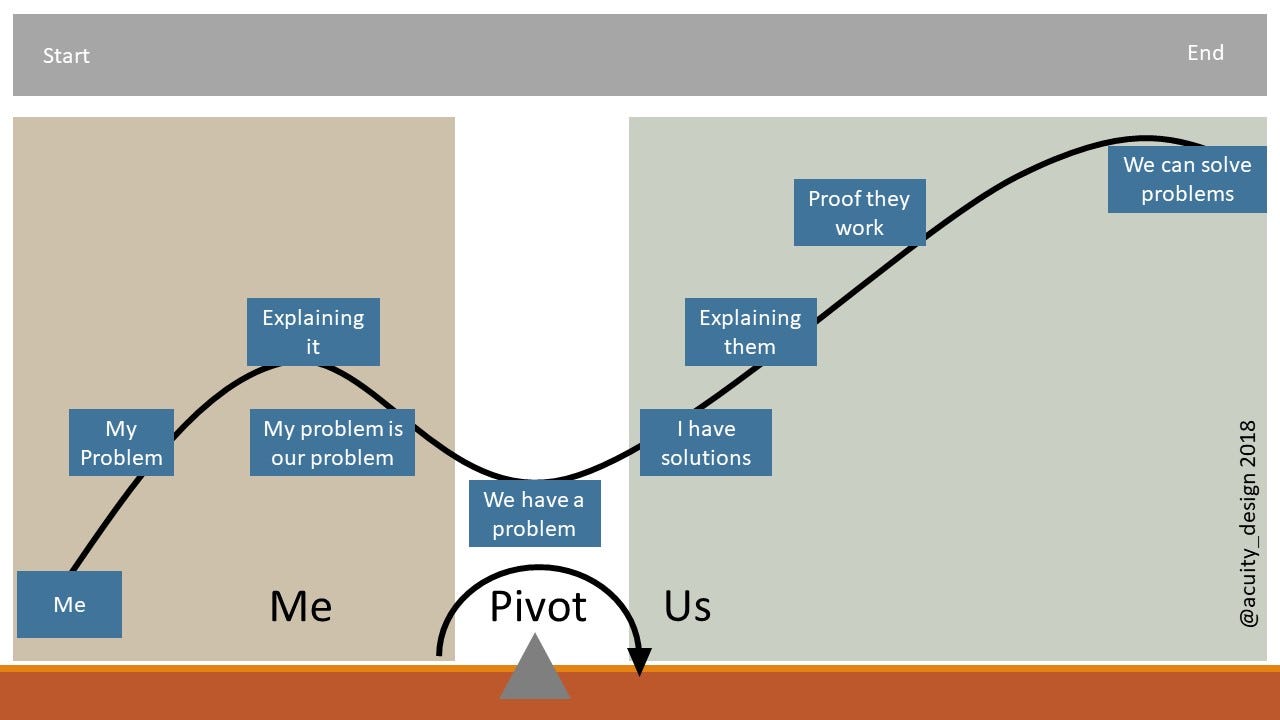
The talk pivots from Me to Us.
This a narrative and rhetorical trick to shift your argument.
However, there is a big risk in this. People need to care.
Emotional Design
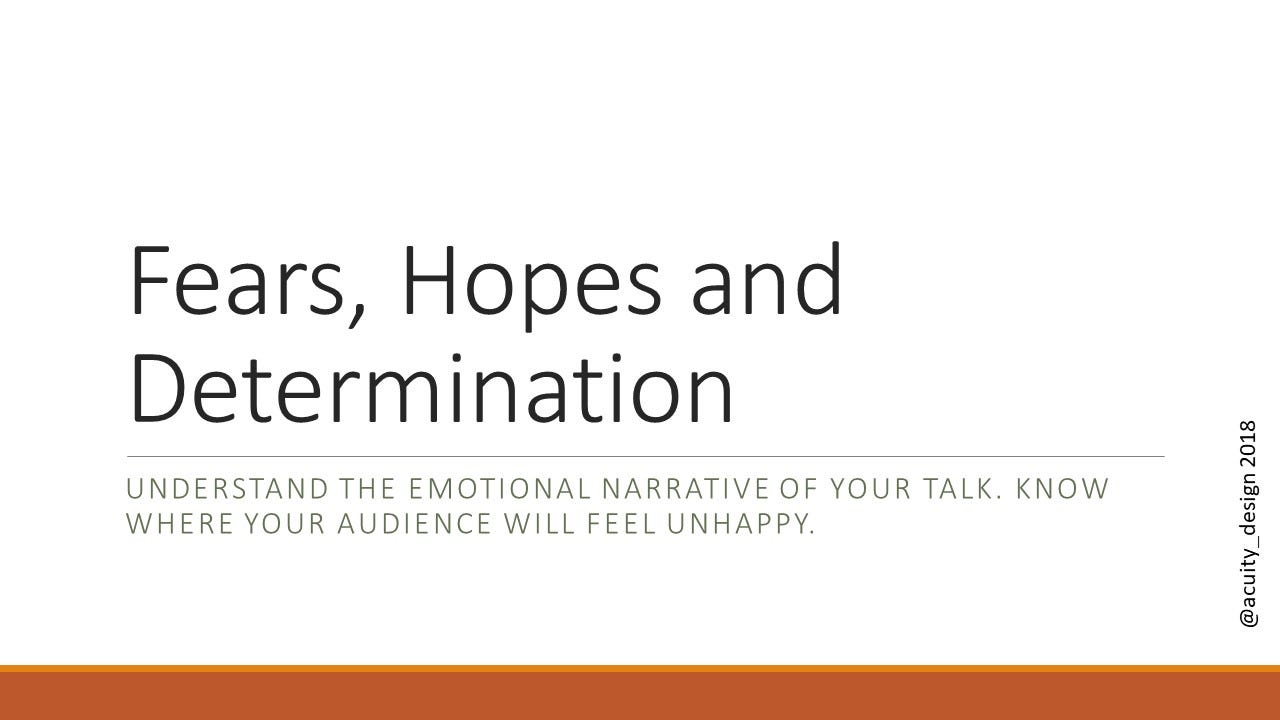
The emotional structure of your talk needs understanding. If you don’t think about what your audience will feel like during your talk then you are not respecting them.

These are the main stress points I know about from my talks.
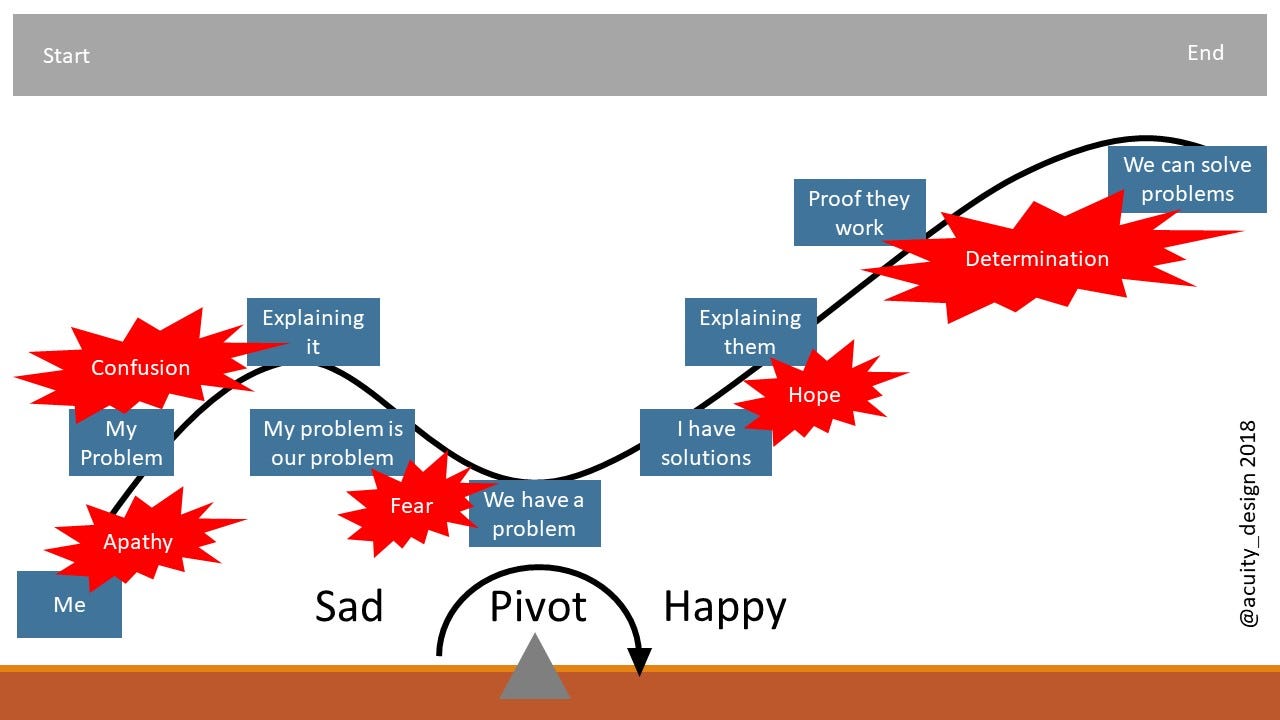
This is also another narrative pivot. From apathy, confusion and fear to hope and determination.
Writing a talk
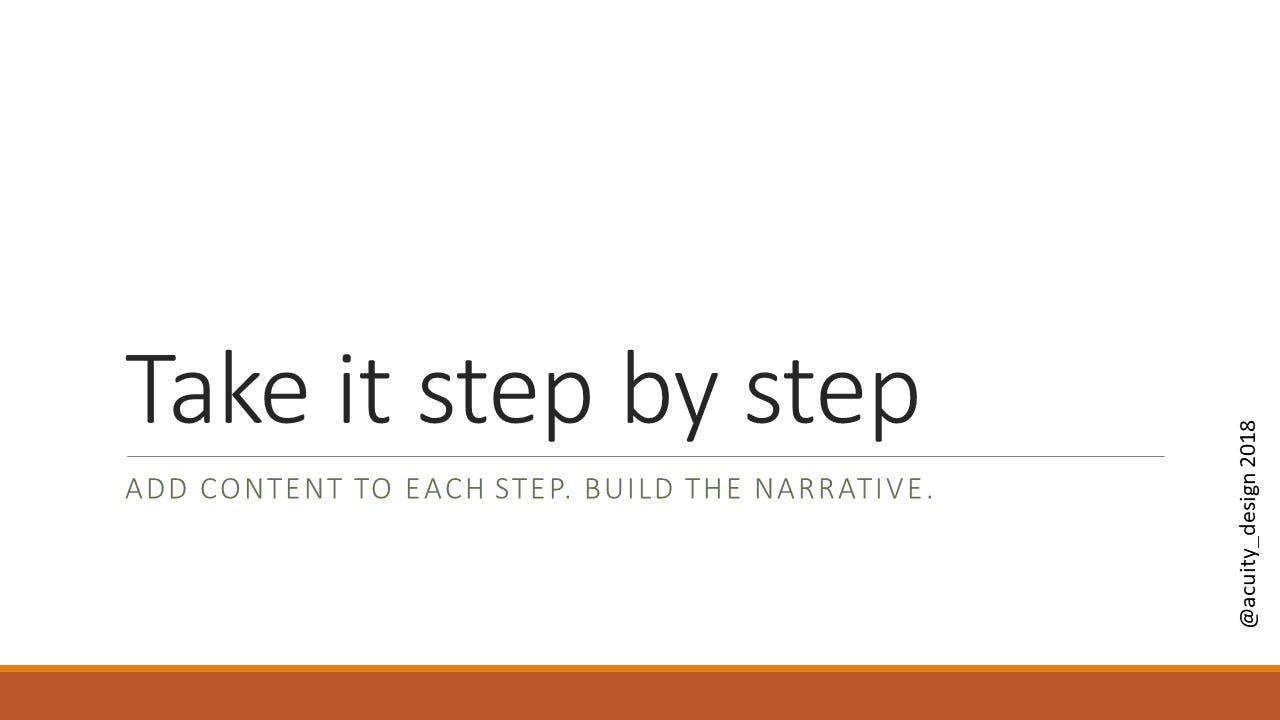
The workbook you can download has blank pages for thinking about what to say. Planning for content, stories, pictures and facts.
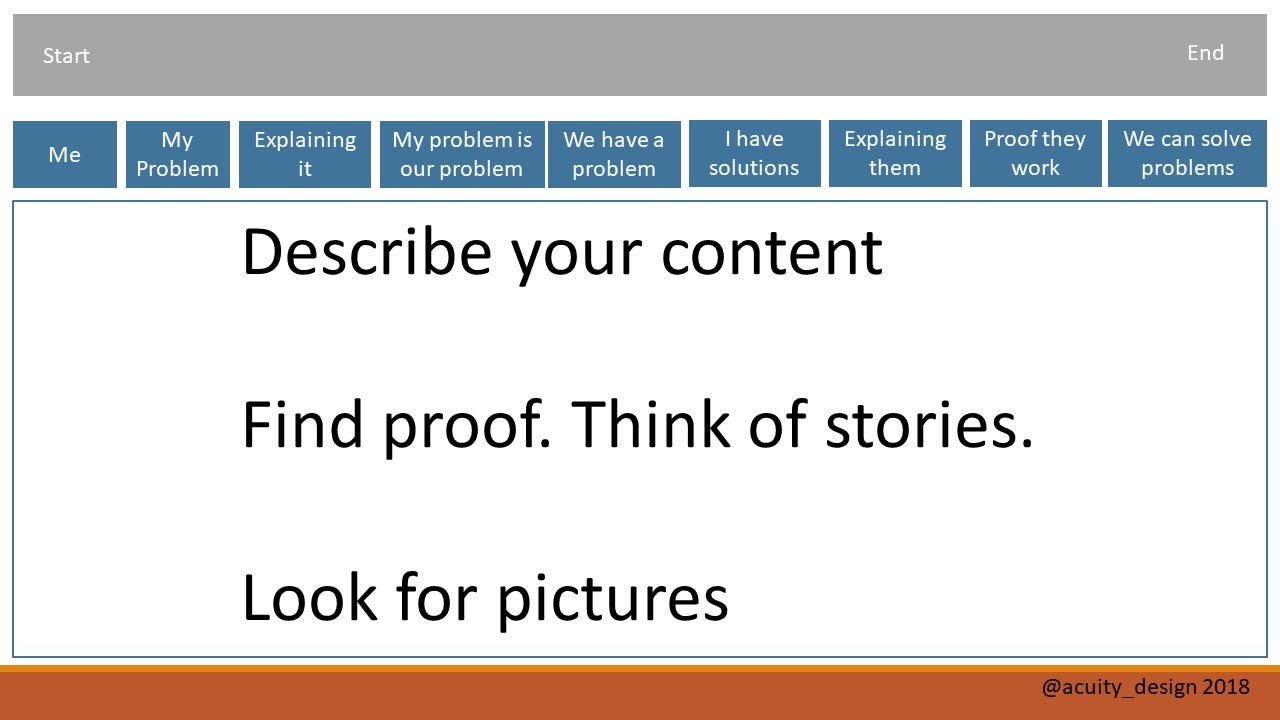
9 sections that take you from talking about yourself and your problem to ourselves and our future actions.
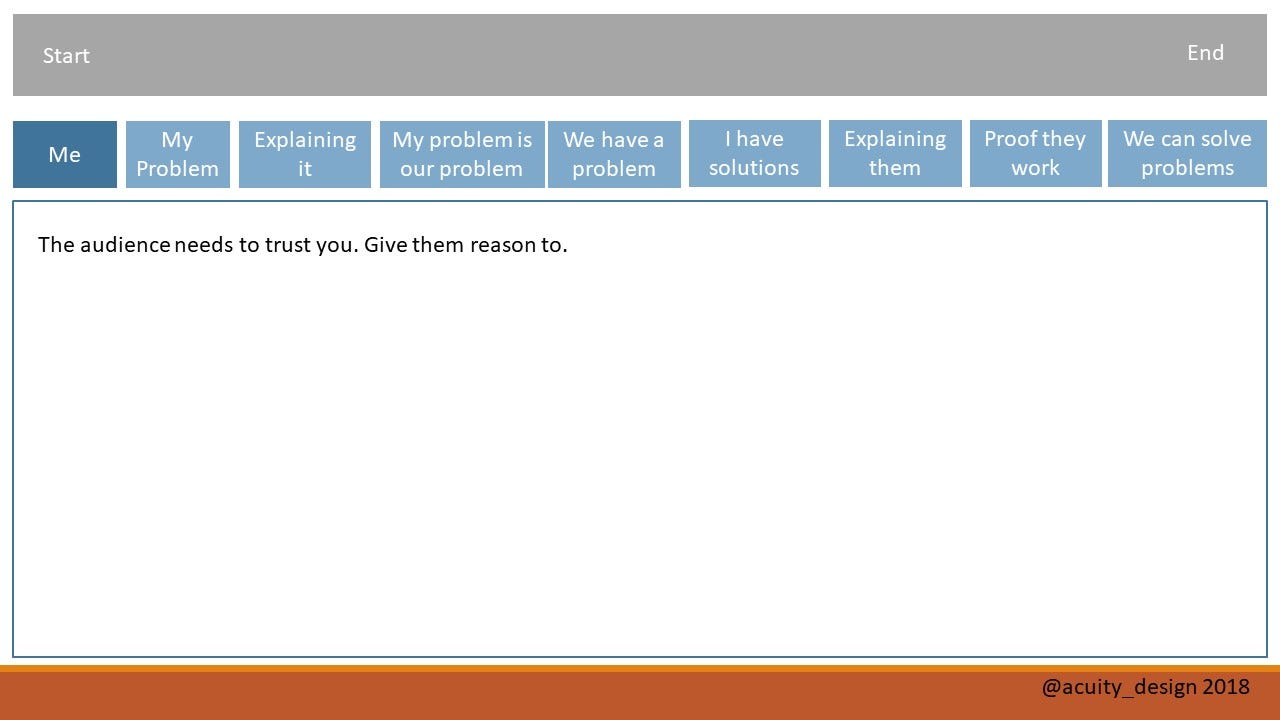
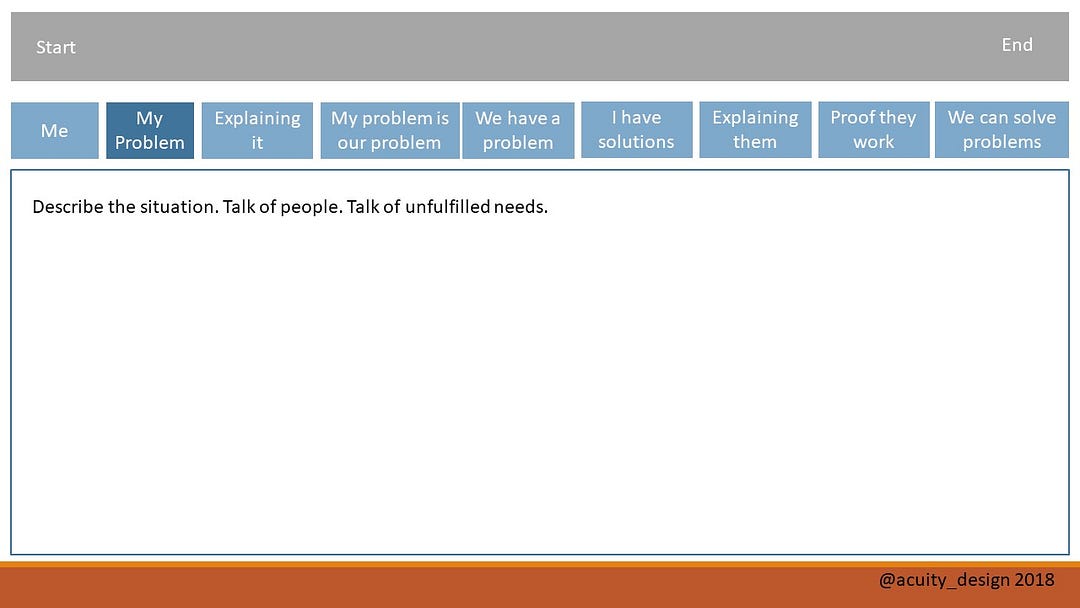
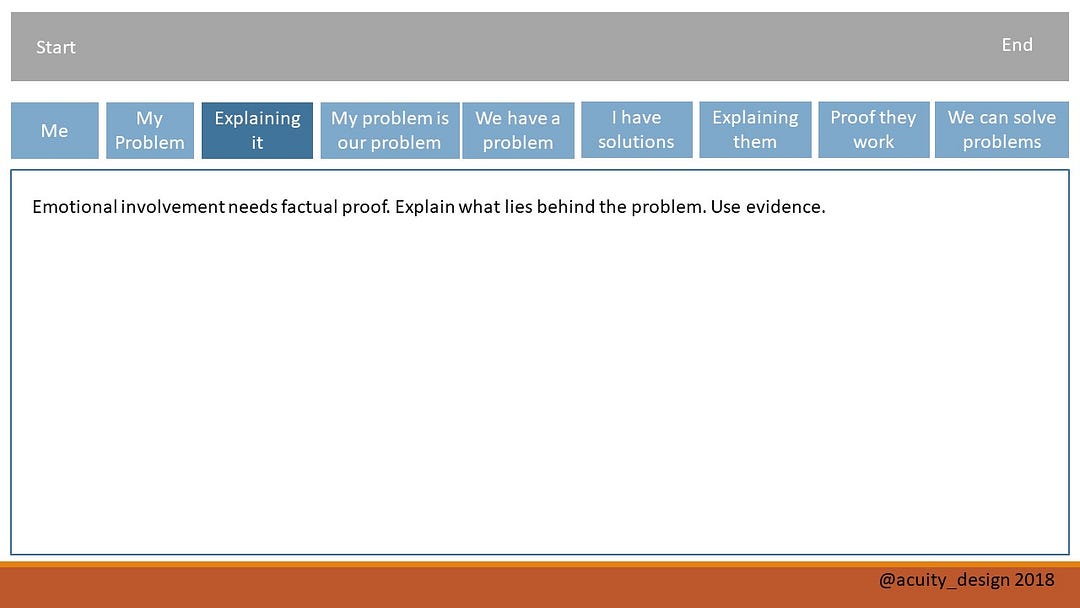
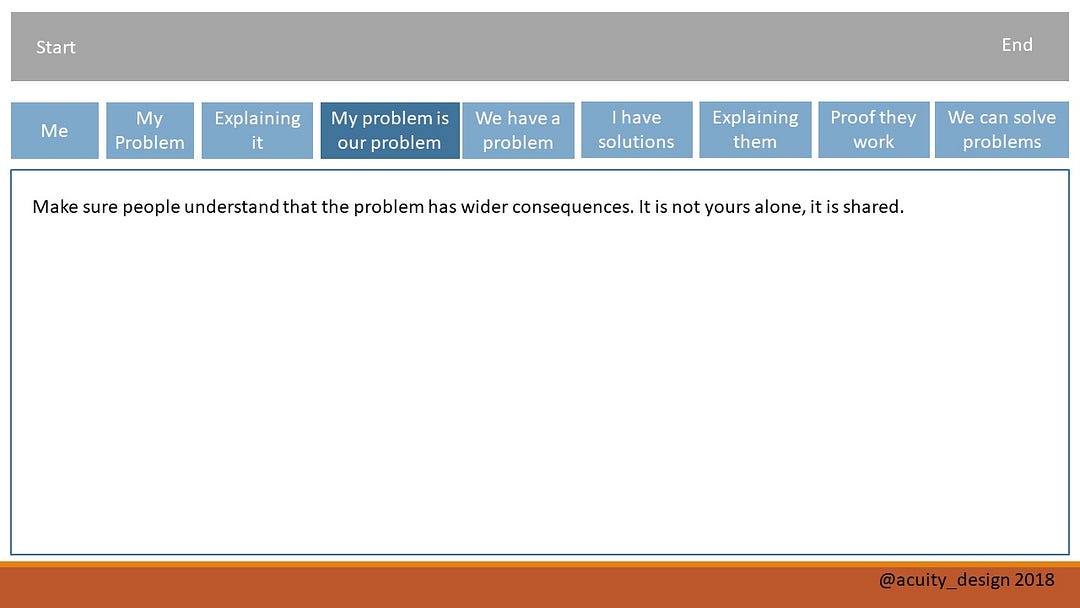
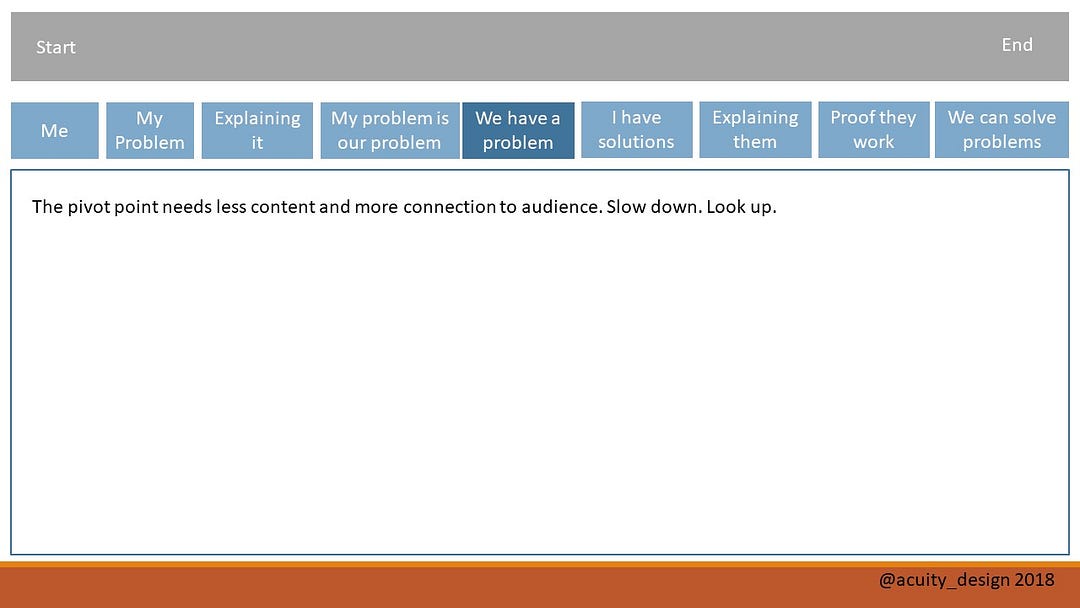
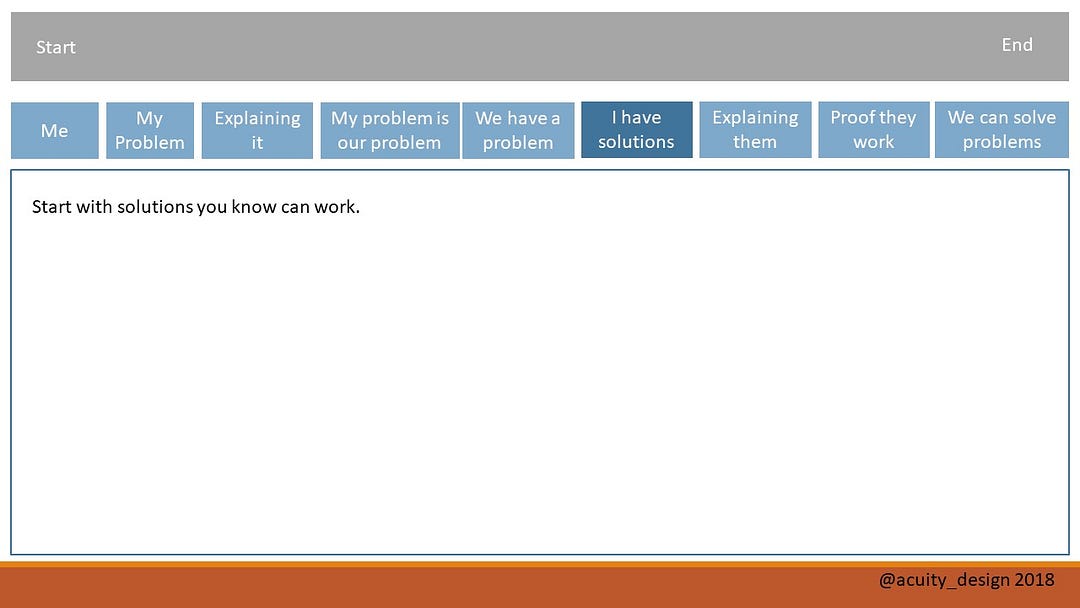
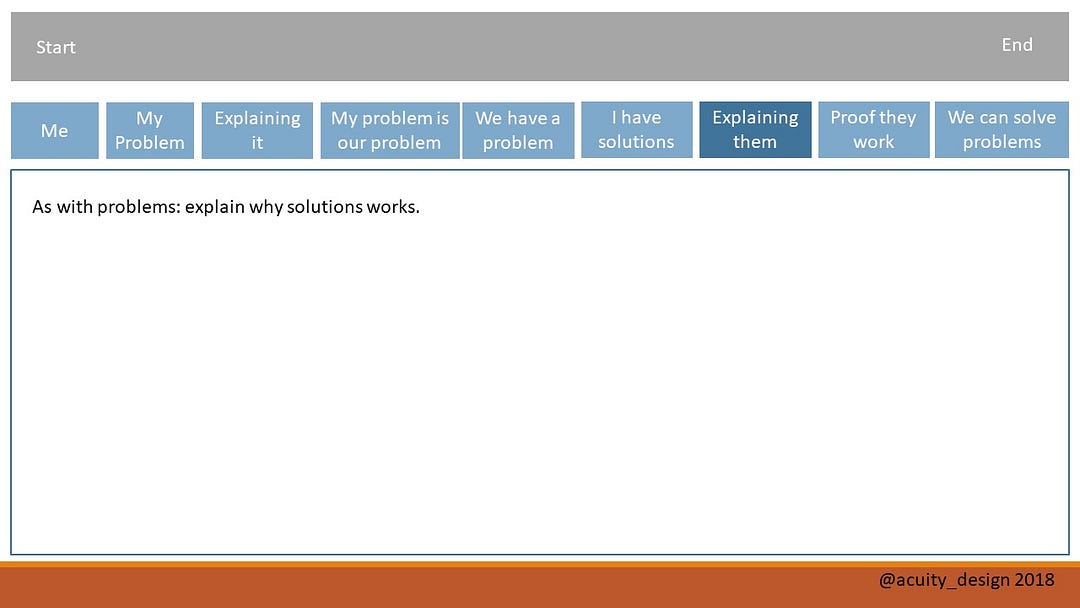
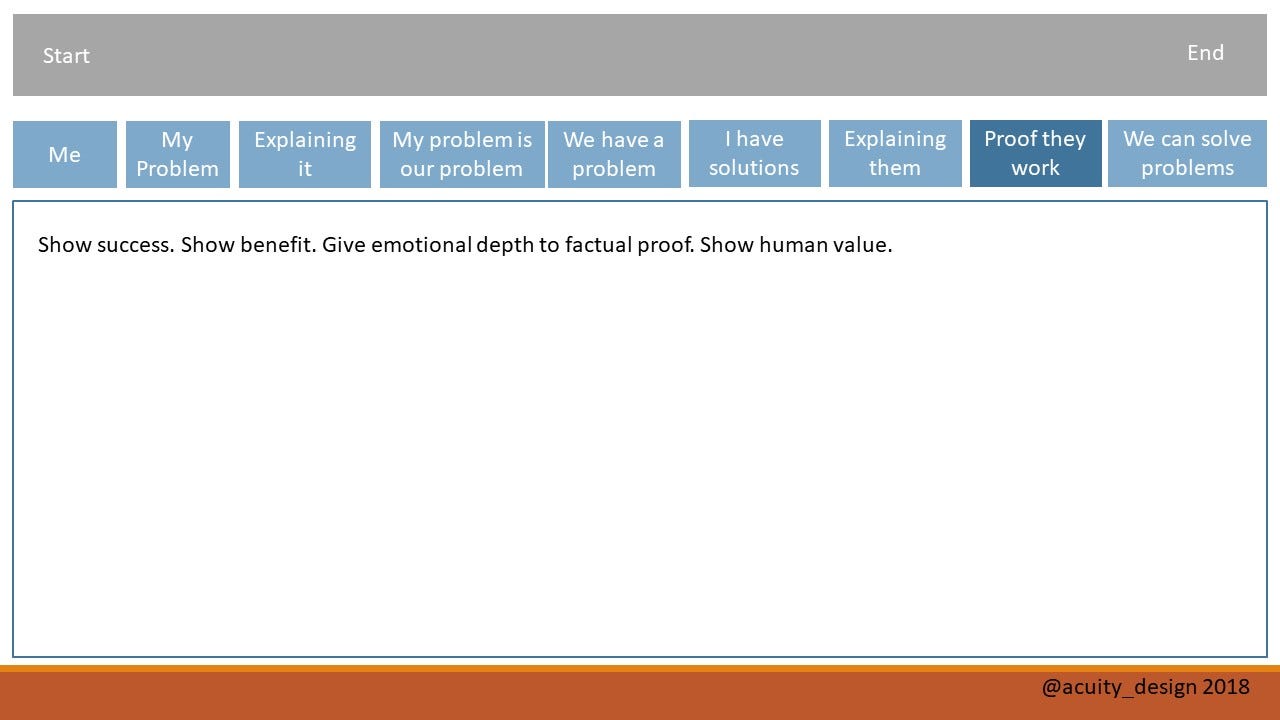
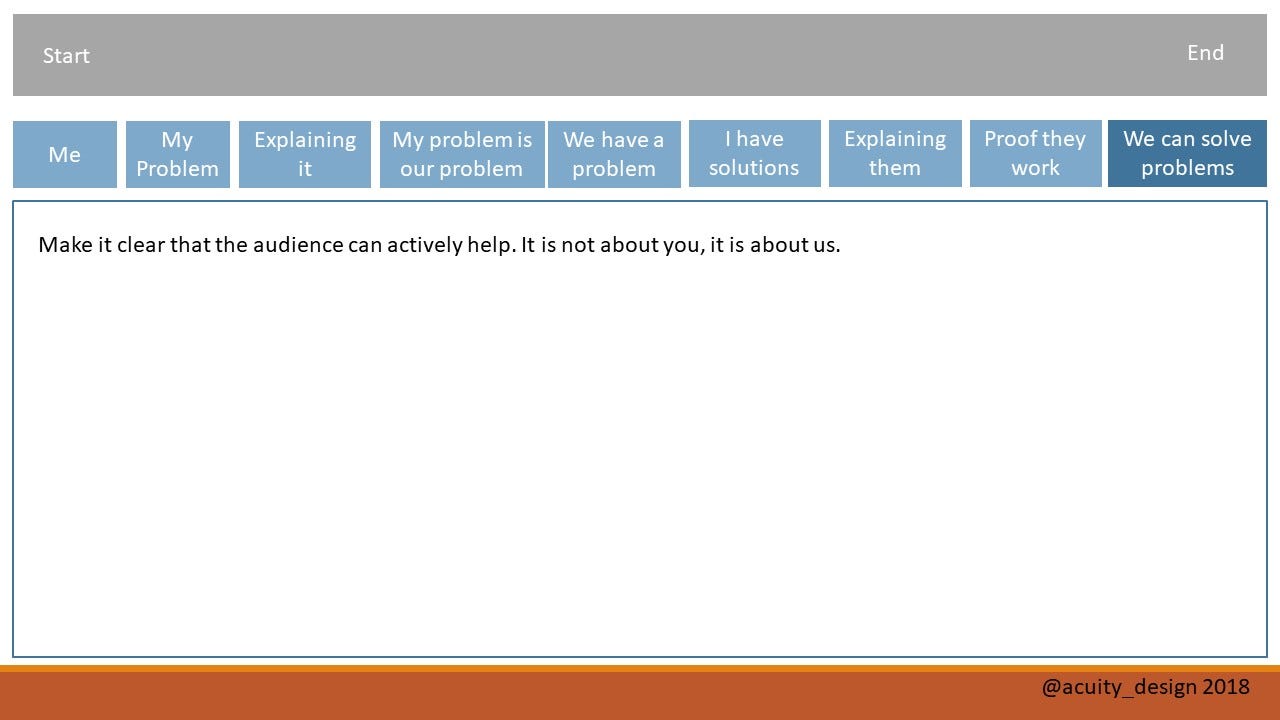
The emotional tests
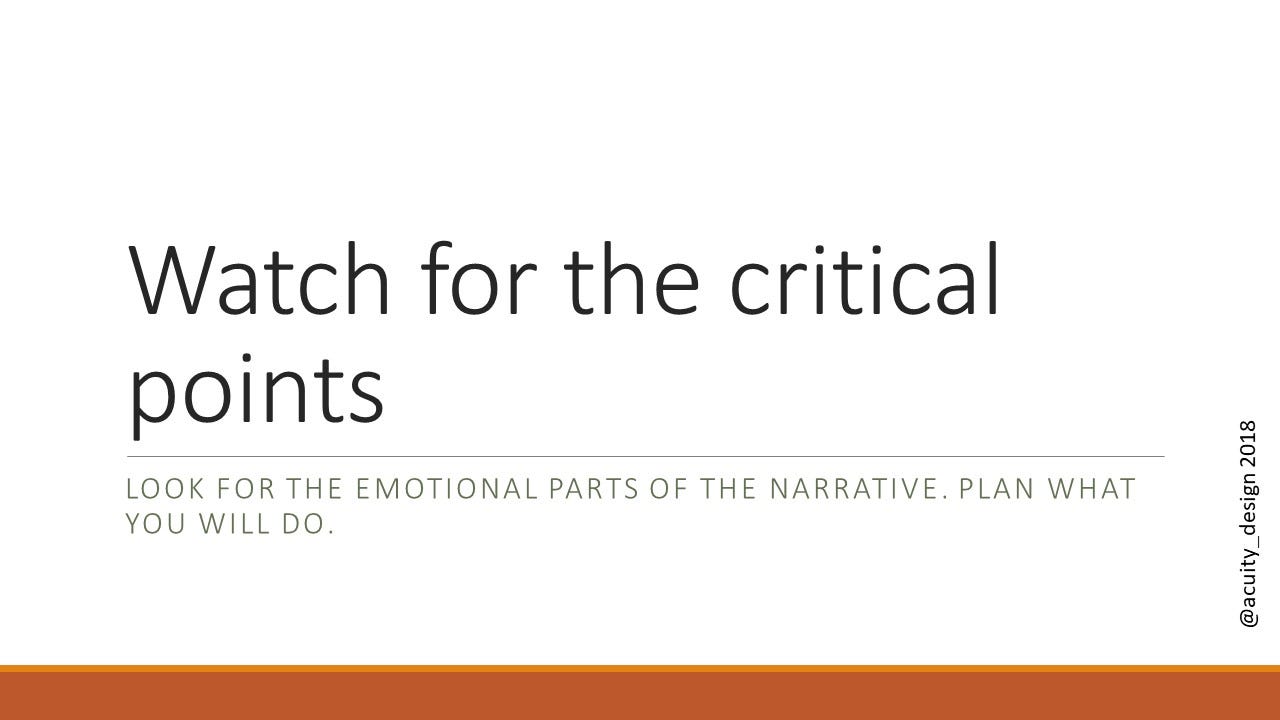
Emotions and how your audience feels are still the critical points to check back over. Content is good but knowing how it affects people is important.
The real test here is to talk thru your talk with other people.
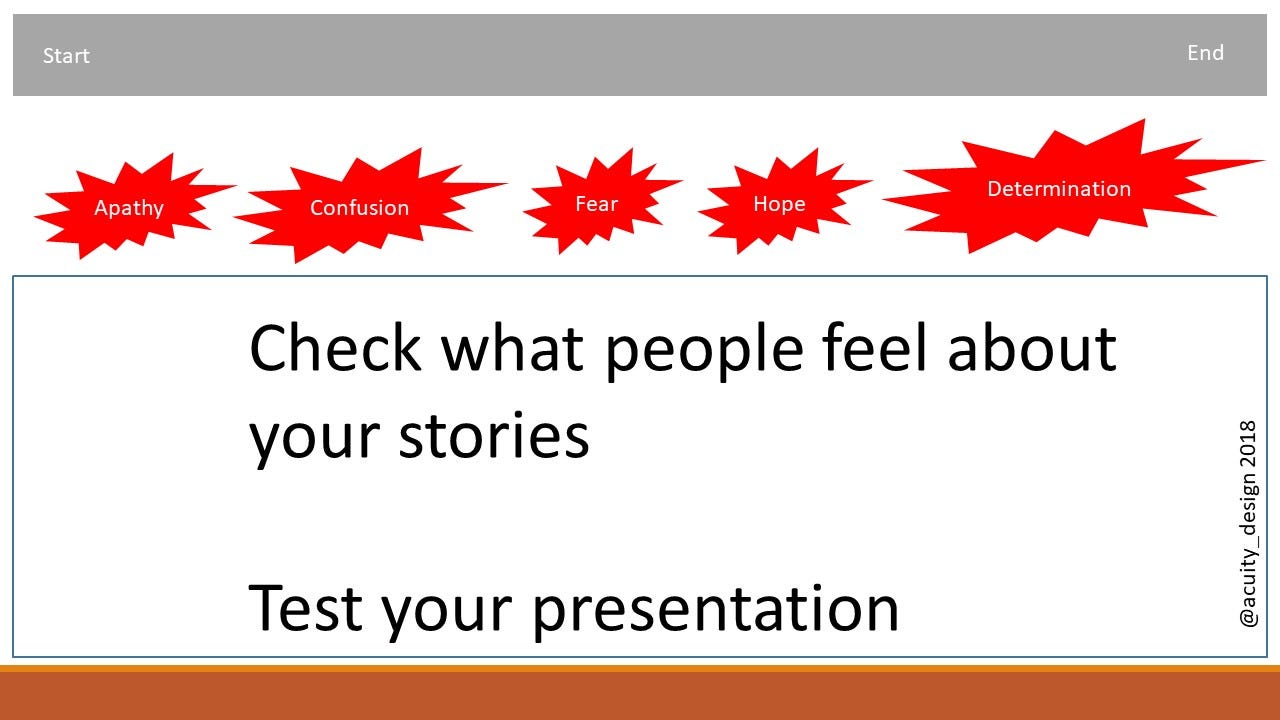
What you mean to say and what people think you’re said are very different things.
Meaning is held by the audience not you.
Emotions are a core part of meaning making so you need to look for them.
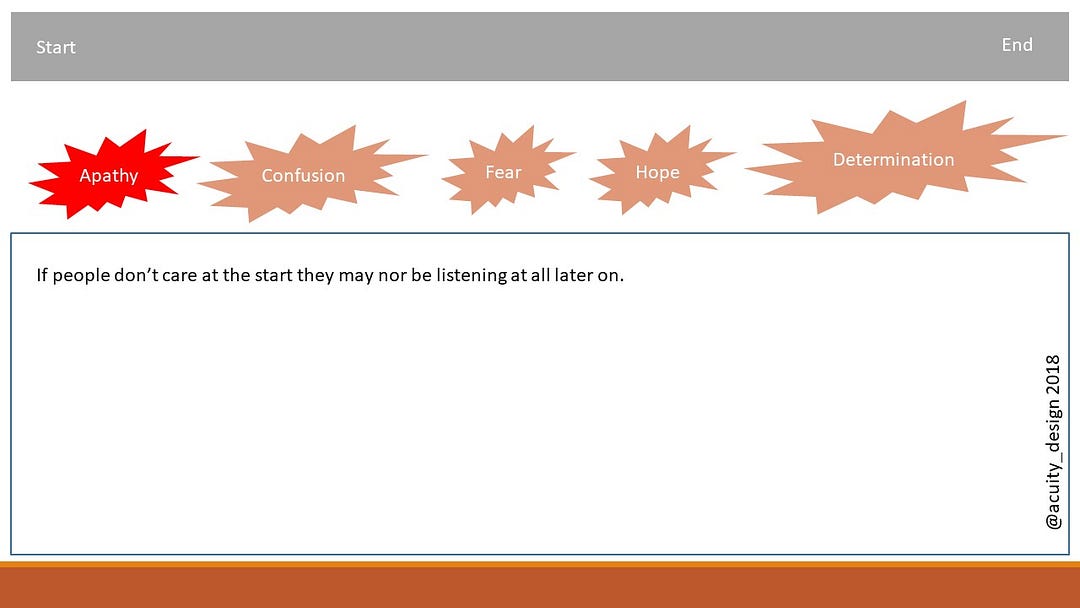
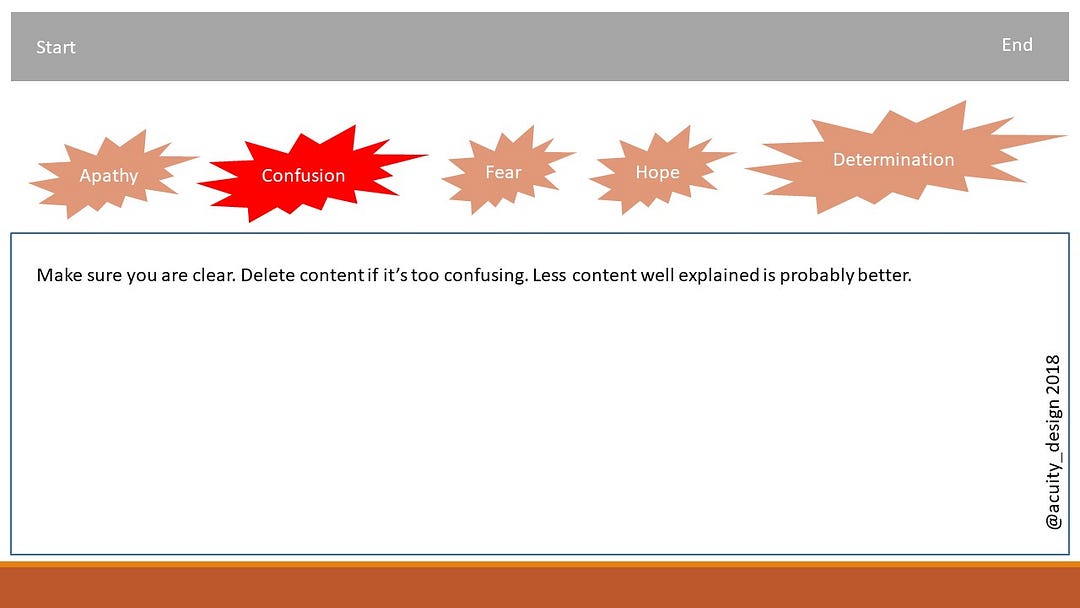
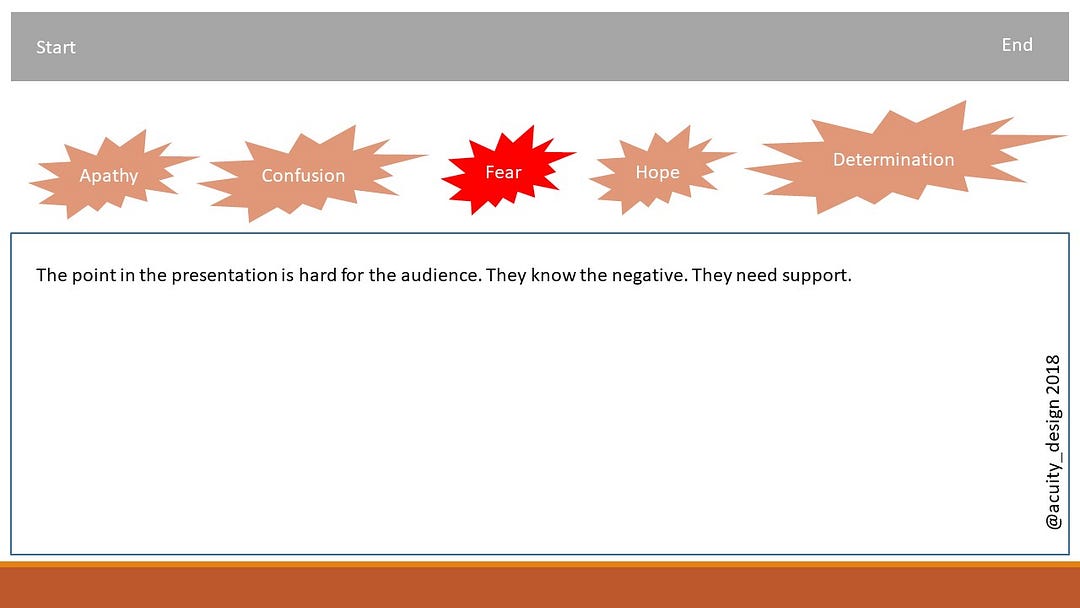
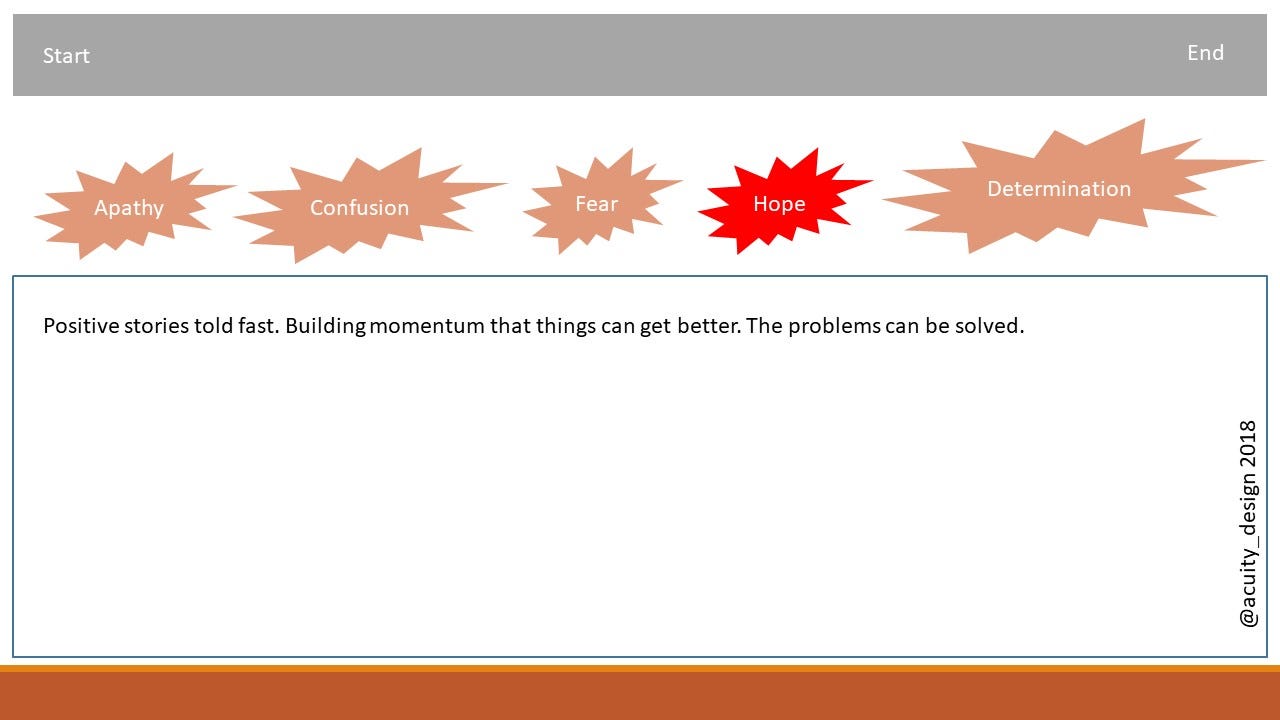
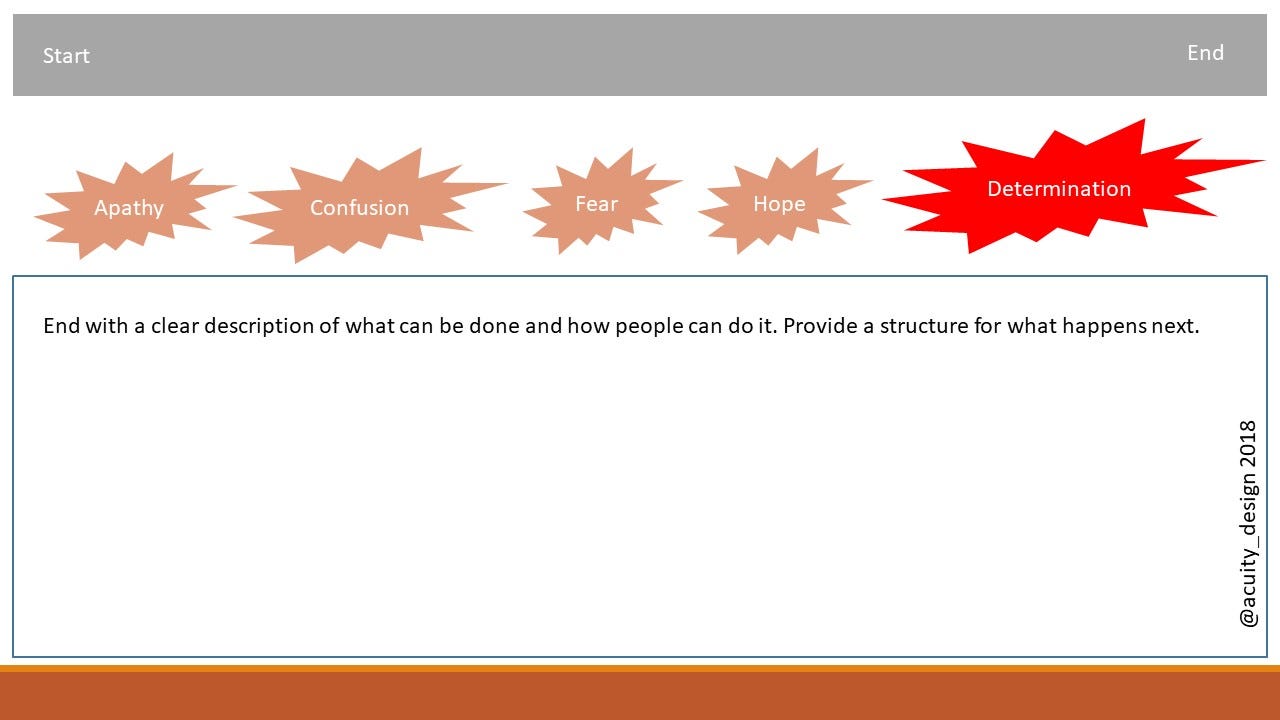
Wrapping Up

That’s all I have to say in this post. What you’re arguing for, what you want to share is yours. What you want people to do after your talk is yours.
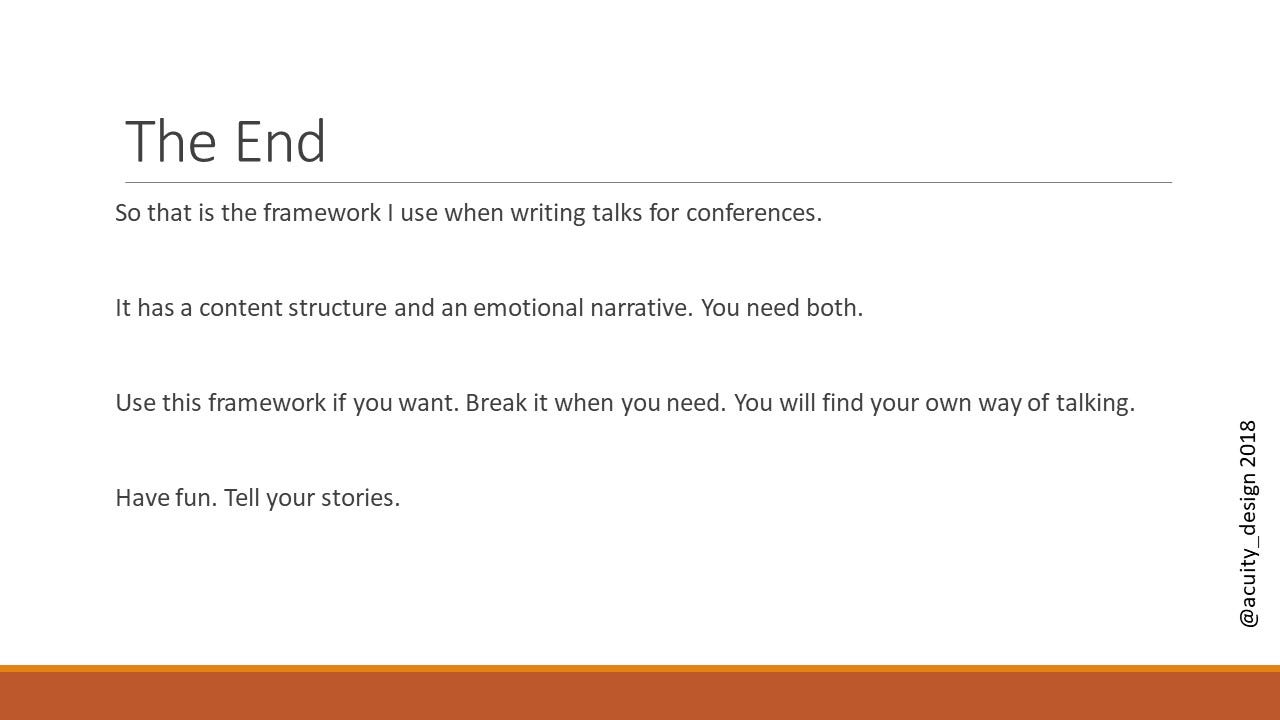
All this is a simple way of thinking about content structure and emotional meaning. You need both to write a talk.
Over time, this structure is irrelevant. How you want to talk will supercede it. It is simply a start point
Have fun.
Tell your own stories in your own ways.
One comment: